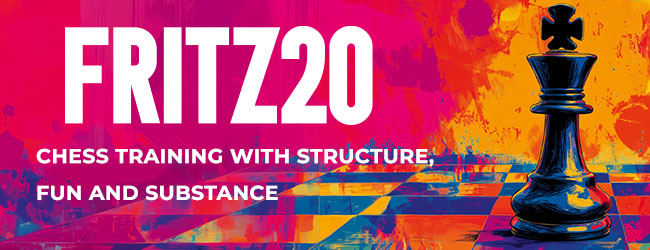From GM to Top Ten
Teimour Radjabov became a grandmaster at age 14, in 2001. While still just 14 years old, he became the youngest player to make the world’s top 100 list. In 2011 and 2013, he competed in the Candidates Tournament. By winning the FIDE World Cup in 2019, Radjabov qualified for the 2020 Candidates Tournament. After FIDE declined to postpone that tournament, despite the pandemic, Radjabov withdrew from it.
WGM Sabina Foişor previously wrote about Grandmaster Judit Polgár as a role model. One of Judit’s books is From GM to Top Ten, a title that could apply equally well to Radjabov’s chess career. Foişor wrote, “As a kid, I remember always looking up to inspirational figures of the time. Judit Polgár and Teimur Radjabov particularly stood out for my own path in chess. I find Radjabov to be a creative classical player, always taking care of the fundamentals of the position.”
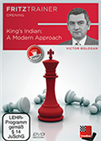 Bologan: "If you study this DVD carefully and solve the interactive exercises you will also enrich your chess vocabulary, your King's Indian vocabulary, build up confidence in the King's Indian and your chess and win more games."
Bologan: "If you study this DVD carefully and solve the interactive exercises you will also enrich your chess vocabulary, your King's Indian vocabulary, build up confidence in the King's Indian and your chess and win more games."In a recent YouTube video, at 2:17:53, Radjabov replied to a foodie’s chat suggestion. Radjabov said, “Travel vlogs about Azerbaijan’s food and culture. Now it’s a bit hard but I’ll think about it. Can be fun actually. Maybe time consuming, considering that generally I have also to work my chess and do some other stuff.” Some of Radjabov’s “other stuff” includes growing his YouTube channel, posting on social media (such as Instagram and Twitter), and spending time with his wife and seven-year-old daughter.
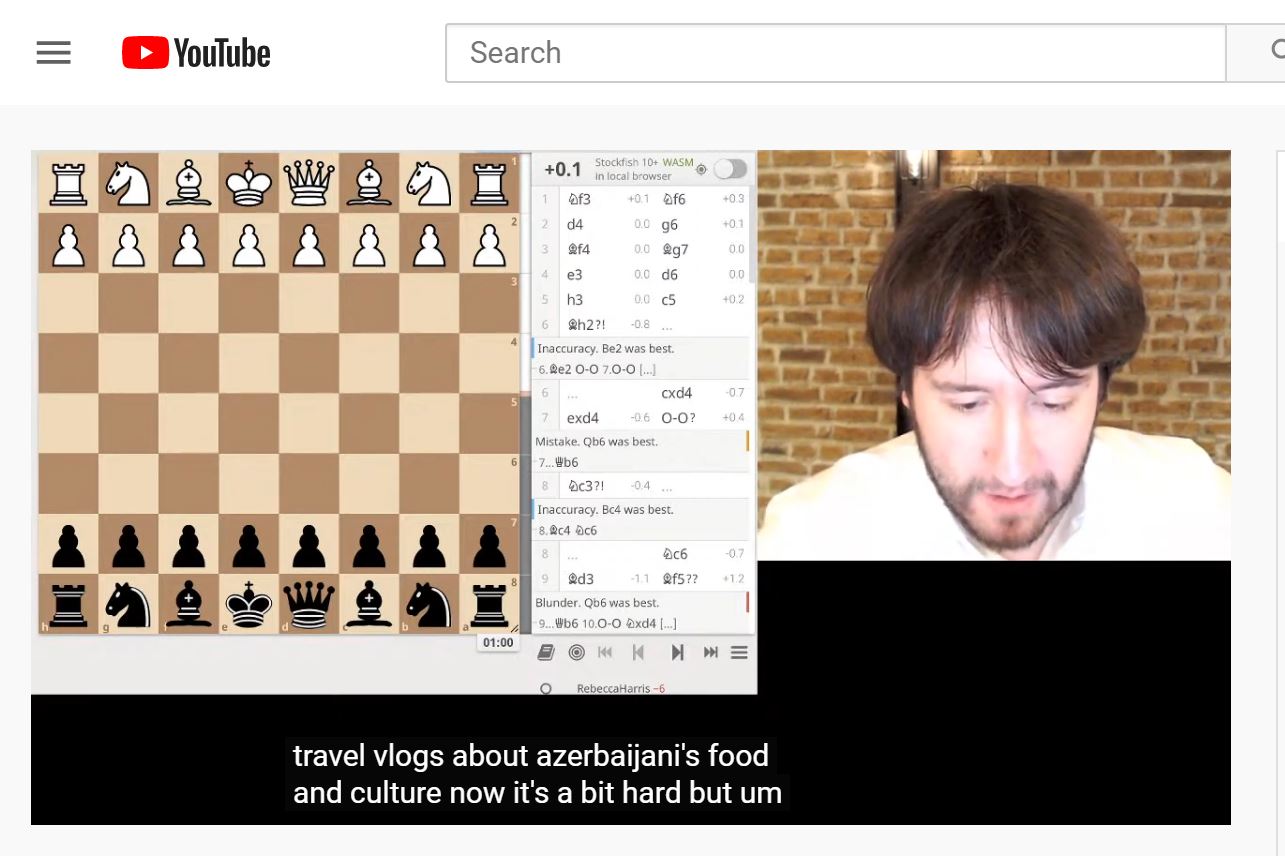
The recipe
WGM Sabina Foişor is also enticed by Azerbaijan’s food and culture. She wrote:
When I took part in the 2016 Olympiad in Baku, I had the pleasure to try some traditional Azeri foods. I particularly had a good time when a friend invited me to this amazing restaurant called Manqal in the historic downtown of Baku. I will never forget the ambiance and delicious meal. It is there that I tried ‘qutab’ for the first time and promised to try cooking it myself one day.
Azeri Herbs Qutab Recipe by Sabina
Ingredients
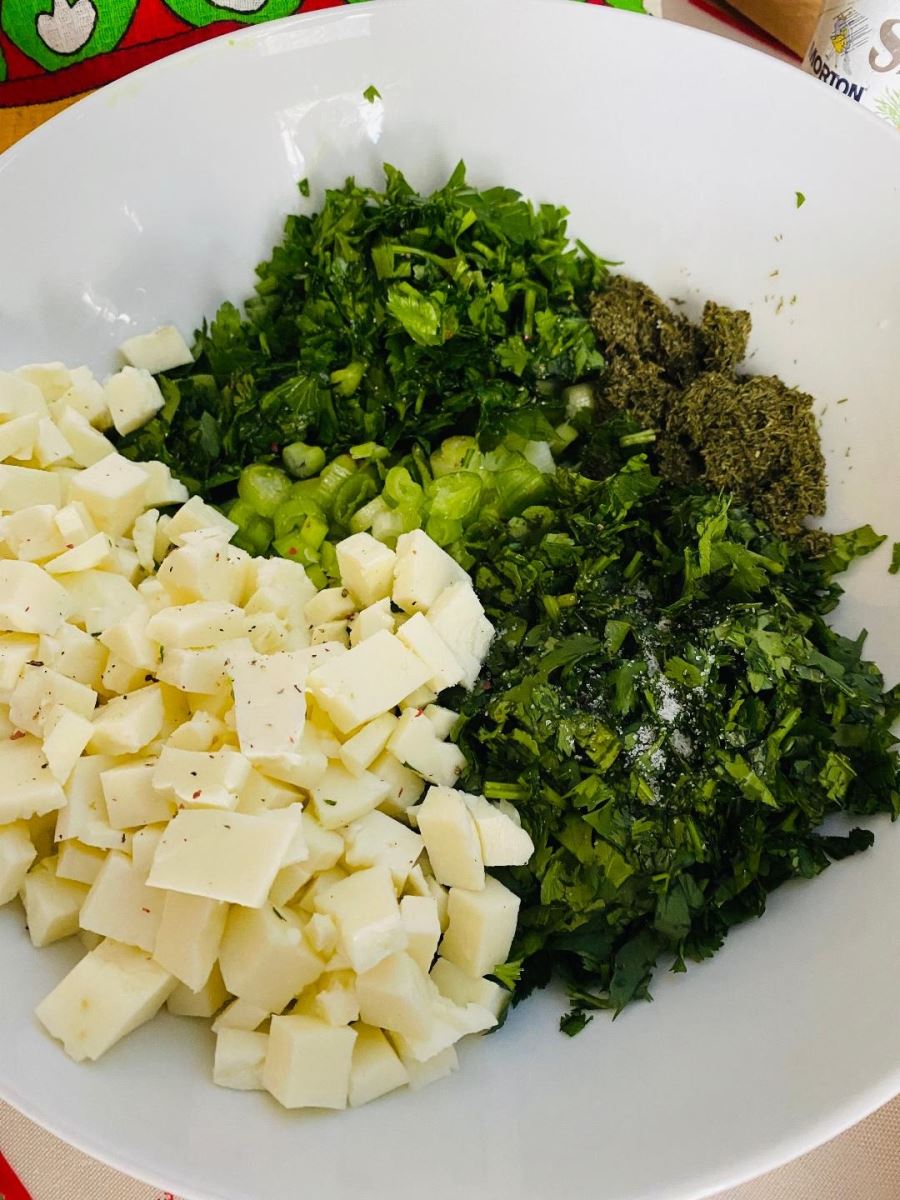 1. Dough:
1. Dough:
- 3 cups all-purpose flour
- 1 egg
- 3/4 cup of water
- A pinch of salt
- 2 Tbsp olive oil
2. Filling:
- 1 cup fresh green onion finely chopped
- 1 cup fresh parsley finely chopped
- 1 cup fresh cilantro finely chopped
- 1/2 cup fresh dill finely chopped (if you don’t have fresh use 2 teaspoons of dried dill and add it to water to re-hydrate it. Make sure to dry the water before mixing.)
- 1.5 cups of any hard cheese of your choice. I used halloumi, but you may use crumbled feta cheese
- 1 tsp salt
- 1 tsp pepper
- Butter for brushing the qutab
Directions
- In a small bowl, beat the egg and combine the water, salt, and oil.
- In a separate large bowl, add the flour and make a well in the middle.
- Gradually add the egg and water mixture to the flour, combining it with your hand.
- Tip the dough out onto a well-floured work surface and start kneading it. Knead the dough for about 4-5 minutes, until soft and elastic. Add more water if the dough is dry or more flour if the dough is too sticky. The dough should be firm, but not too dry and should stop sticking to your hands after kneading in some extra flour.
- Once formed, cover the dough and let it rest while you prepare the filling.
- Chop your green onions, herbs, and cheese and place in a large bowl. Add salt and pepper and mix well.
- Take your dough and place it back on the working surface.
- First divide it into half. Roll each half in the shape of a stick and divide each half into 5-6 equal pieces.
- Shape each of the 10-12 pieces into balls and then roll each ball one at a time into circles 20-22 cm (7-8 inches) in diameter as best you can.
- Fill half of the circle with the filling (approx. 1.5-2 Tablespoons of mix), leaving a little bit of space on the edges.
- Fold the dough and press the ends with your fingers.
- Cut the edges with a knife or a pizza cutter in the shape of a semi-circle. Keep the remaining pieces and add them together in the end to create one final qutab.
- Repeat with remaining dough.
- Heat a dry large pan or cast-iron skillet over medium heat. No oil needed!
- Place the qutab as the space allows in the pan/skillet for anywhere between 4-8 minutes on each side or until golden brown (it really depends on how thin you have rolled your dough, the thinner the less amount of time).
- Remove from the pan and immediately brush with butter.
- Serve as a meal or accompany with some yogurt dip.
- Enjoy your meal! Serves 4-6.
[Click images to enlarge!]
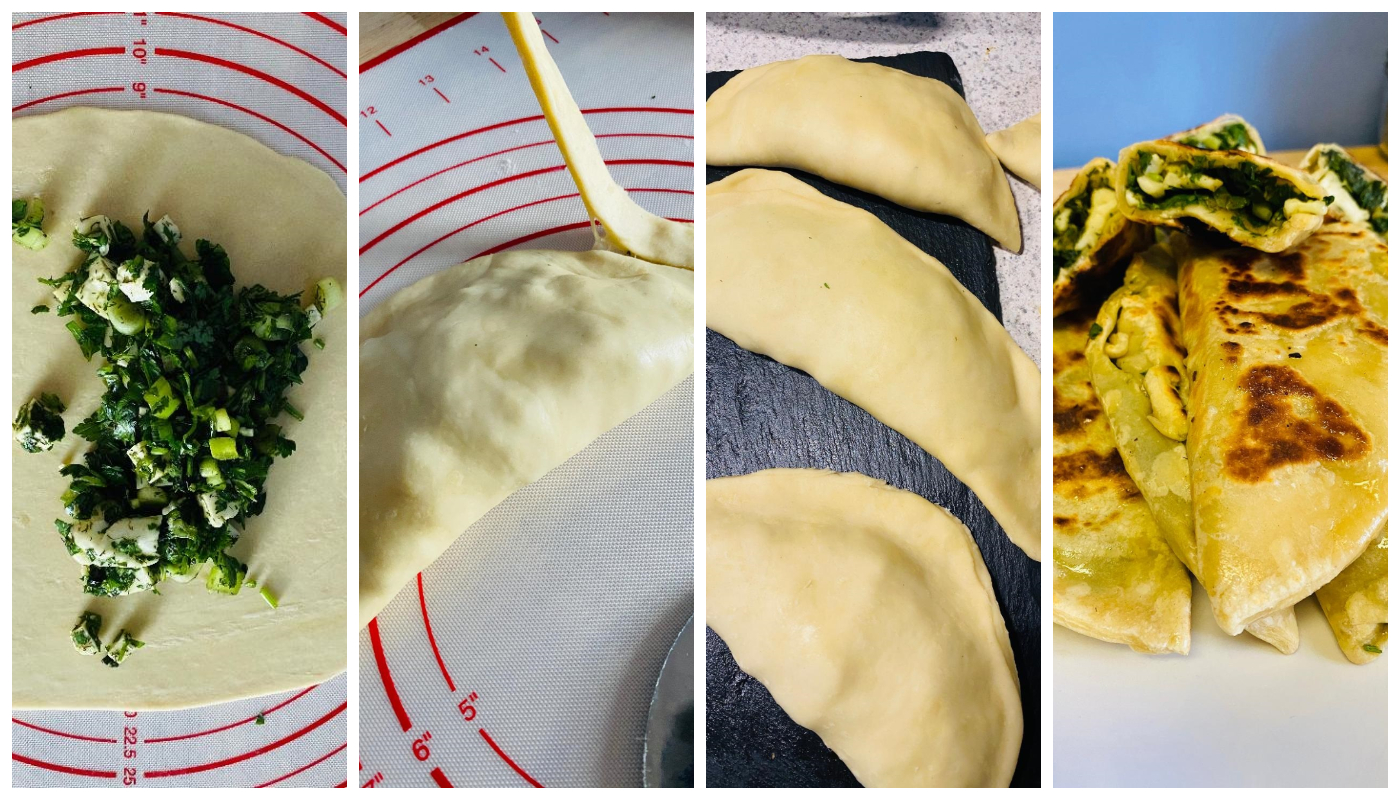
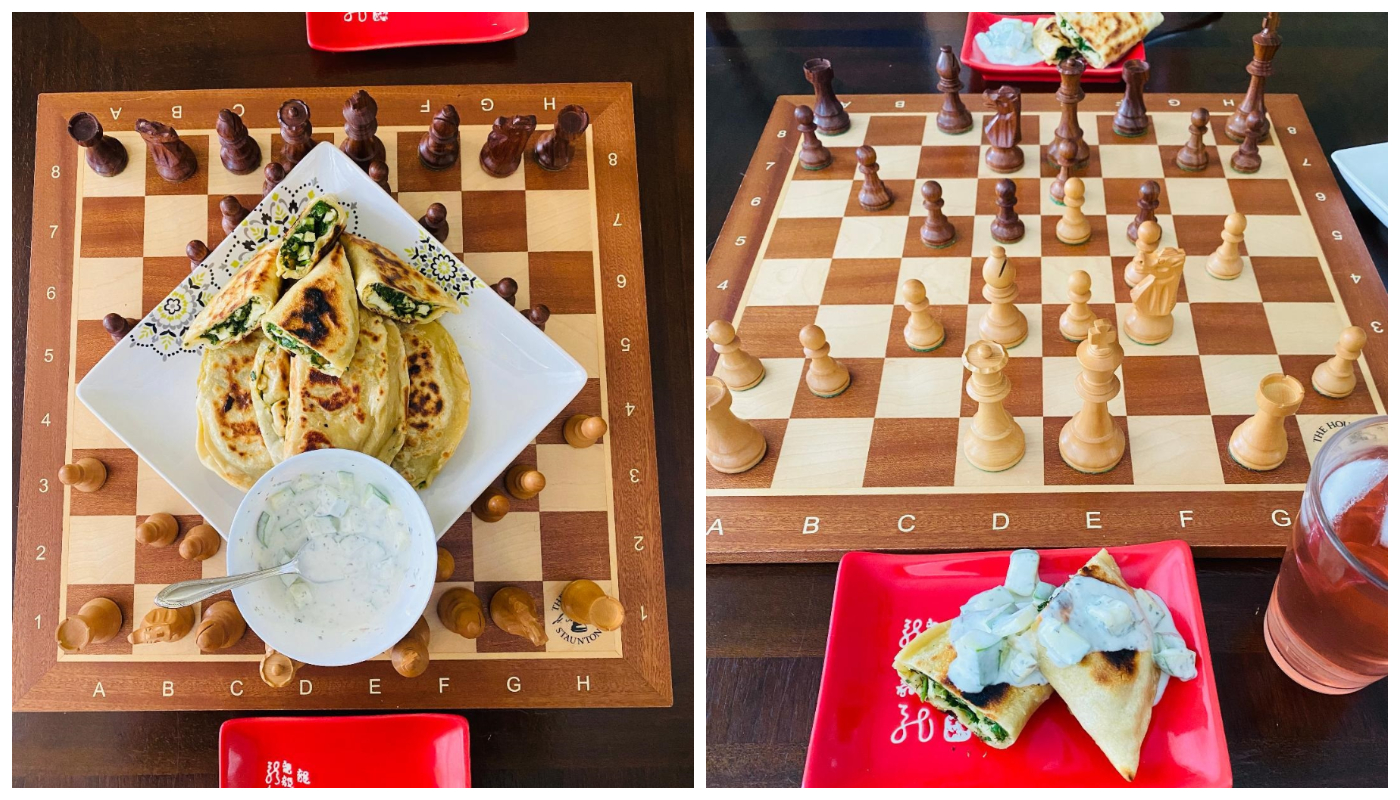
The game
Foişor chose Radjabov — Naiditsch, Dortmund 2003, in part because “it involves the g4-push and, as I have previously stated in different articles, that move is special to my own career.” Radjabov’s win over GM Arkady Naiditsch is also analyzed in this ChessBase article.
| Replay and check the LiveBook here |
Please, wait...
- Start an analysis engine:
- Try maximizing the board:
- Use the four cursor keys to replay the game. Make moves to analyse yourself.
- Press Ctrl-B to rotate the board.
- Drag the split bars between window panes.
- Download&Clip PGN/GIF/FEN/QR Codes. Share the game.
- Games viewed here will automatically be stored in your cloud clipboard (if you are logged in). Use the cloud clipboard also in ChessBase.
- Create an account to access the games cloud.
The Torre Attack is an extremely effective way of taking your opponent into an uncomfortable situation right from move one.
Links
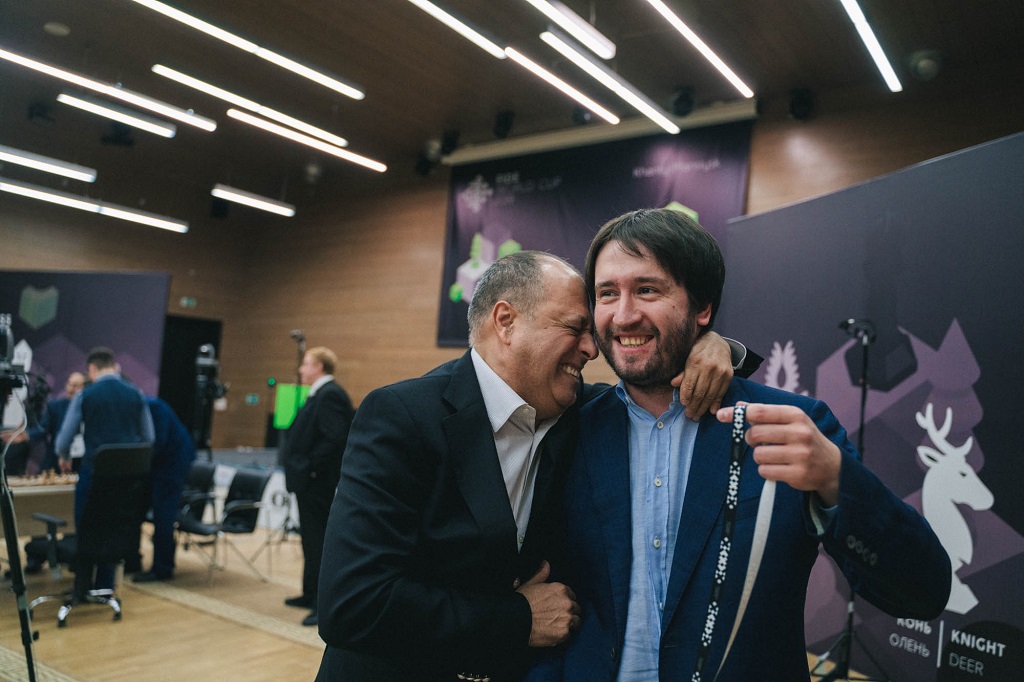

















 1. Dough:
1. Dough:

